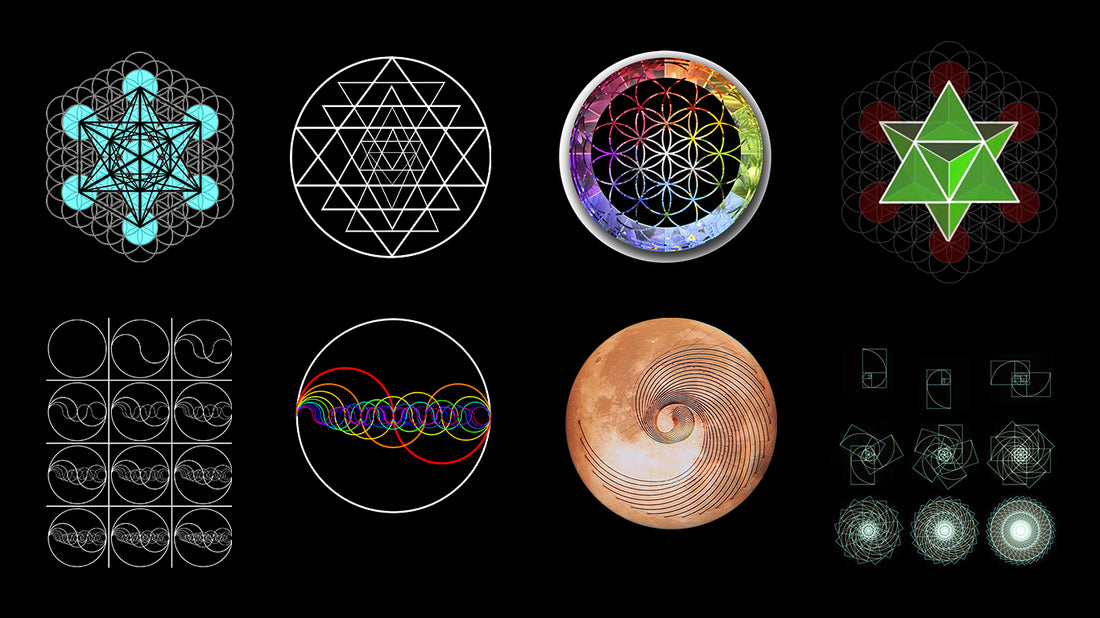Sacred Geometry: Unveiling the Mystical Origins
Throughout the annals of history, humanity has held a fascination with patterns, shapes, and proportions that are believed to hold a deeper, spiritual significance. This fascination has given rise to the intricate realm of sacred geometry, a concept that delves into the interconnectedness between mathematical principles and the metaphysical world. The origins of sacred geometry can be traced back to ancient civilizations, where its principles were integrated into art, architecture, and spiritual practices, shaping the very fabric of human understanding.
The earliest traces of sacred geometry can be found in the ancient civilizations of Egypt and Mesopotamia. The Egyptians' knowledge of geometry was intimately tied to their construction of monumental structures, such as the pyramids and temples. These awe-inspiring edifices were meticulously designed with precise measurements and geometric ratios, reflecting a belief in the inherent harmony and balance found in geometric shapes. The Egyptians' reverence for the circle, square, and triangle laid the foundation for the development of sacred geometry.
Moving eastward, the ancient Chinese and Indian cultures also embraced the principles of sacred geometry in their spiritual traditions. In China, the concept of Yin and Yang – the dualistic interplay of opposites – can be seen as a manifestation of geometric harmony, representing the balance between contrasting forces. In India, the intricate patterns of mandalas and yantras were employed as tools for meditation, illustrating the profound connection between geometric forms and the expansion of consciousness.
However, it was the ancient Greeks who made significant strides in formalizing the study of geometry, ultimately contributing to the evolution of sacred geometry. The renowned mathematician Pythagoras is often credited with unveiling the mystical relationships between numbers and shapes. The Pythagorean theorem, which asserts that in a right-angled triangle, the square of the hypotenuse is equal to the sum of the squares of the other two sides, marked a pivotal moment in the development of geometric knowledge. Pythagoras and his followers believed that these mathematical truths were not just intellectual exercises, but keys to understanding the fundamental order of the universe.
As civilizations exchanged ideas through trade and conquest, the principles of sacred geometry spread across cultures and continents. The advent of the Renaissance in Europe witnessed a revival of interest in ancient wisdom, with thinkers like Leonardo da Vinci and Johannes Kepler exploring the intersection of art, science, and spirituality. Leonardo's Vitruvian Man, a depiction of the perfect proportions of the human body, exemplifies the Renaissance fascination with harmonious geometric relationships.
In more recent times, sacred geometry has experienced a resurgence, captivating the minds of artists, architects, and spiritual seekers alike. Modern scholars and researchers have delved into the esoteric significance of geometric symbols, suggesting that they hold the keys to unlocking higher states of consciousness and connecting with universal truths. The flower of life, the golden ratio, and the Fibonacci sequence are among the many geometric concepts that continue to inspire and mystify.
In conclusion, the origin of sacred geometry is a tapestry woven with the threads of ancient civilizations, mathematical discoveries, and spiritual insights. From the monumental structures of Egypt to the contemplative mandalas of India, humanity's quest for understanding the hidden order of the universe has led to the exploration of geometric patterns that transcend the material world. The legacy of sacred geometry endures as a testament to the enduring human desire to uncover the profound connections between mathematics, spirituality, and the cosmos. As we continue to unravel the mysteries of sacred geometry, we embark on a journey that bridges the gap between the tangible and the transcendent, unveiling the timeless beauty and wisdom encoded within geometric forms.

